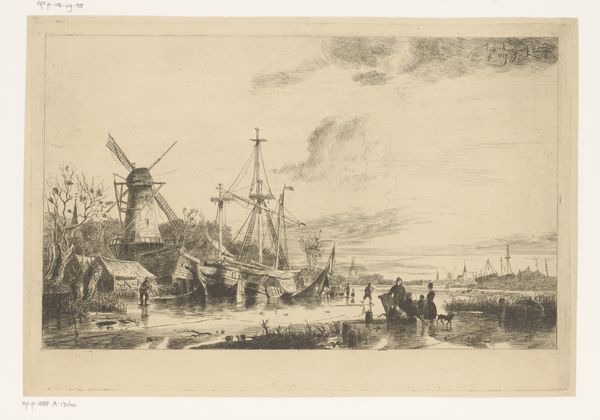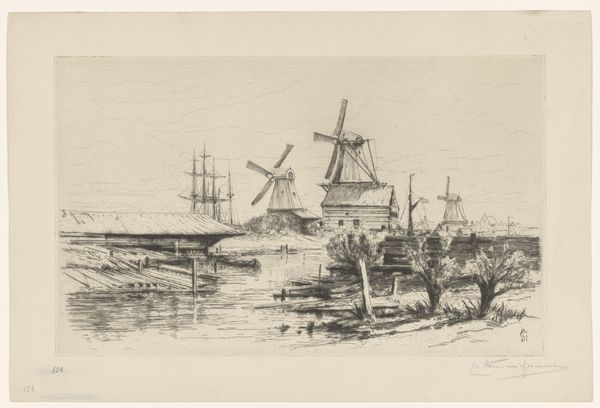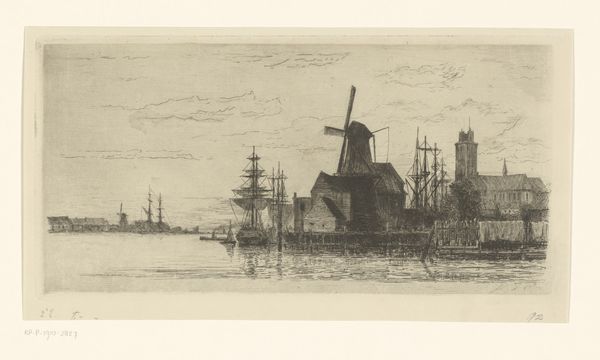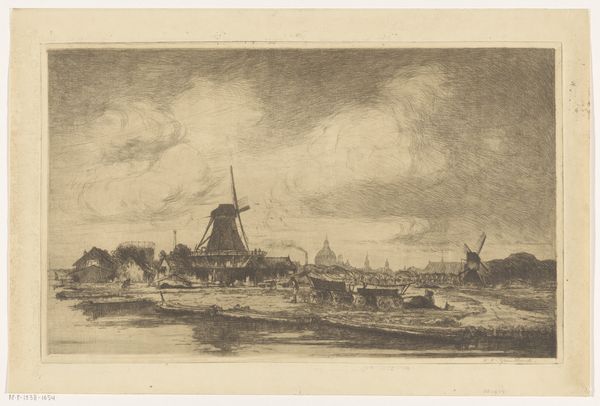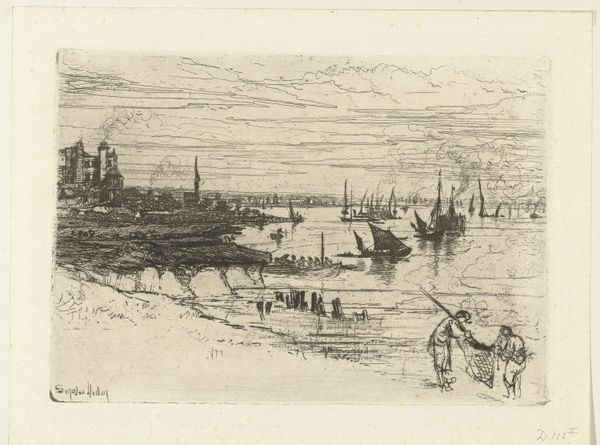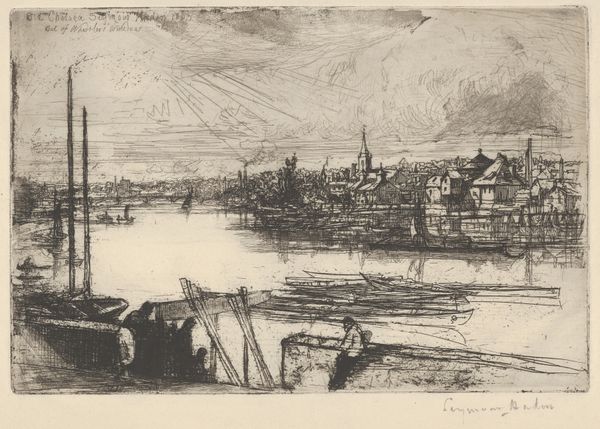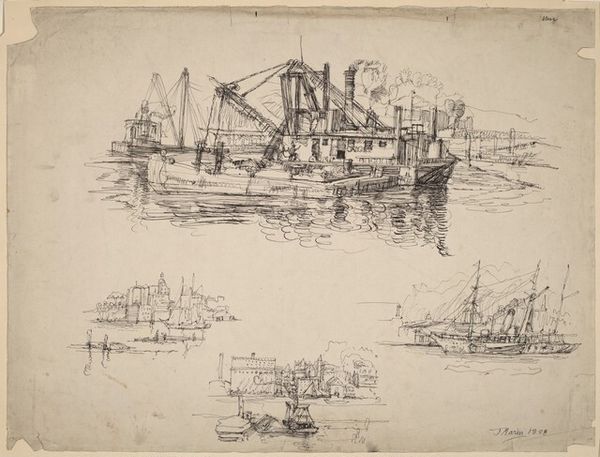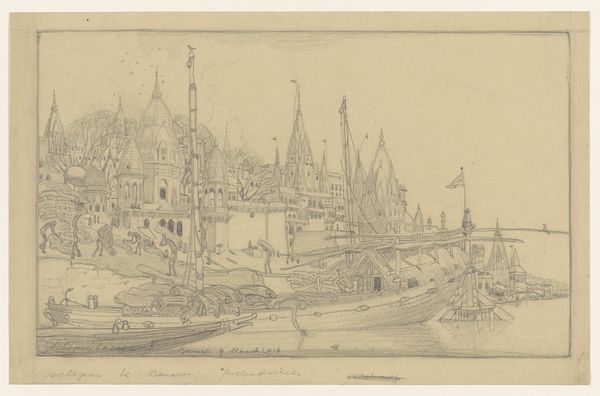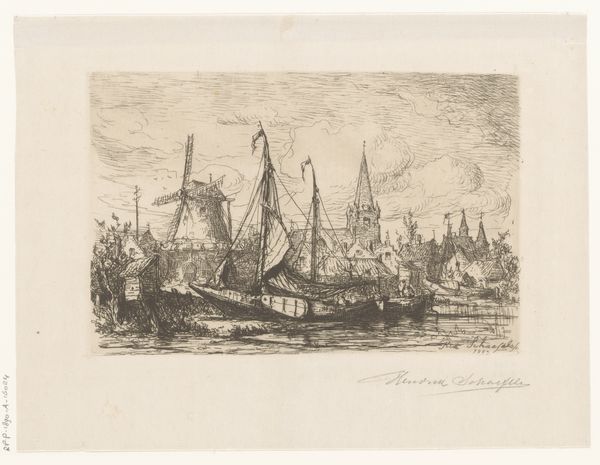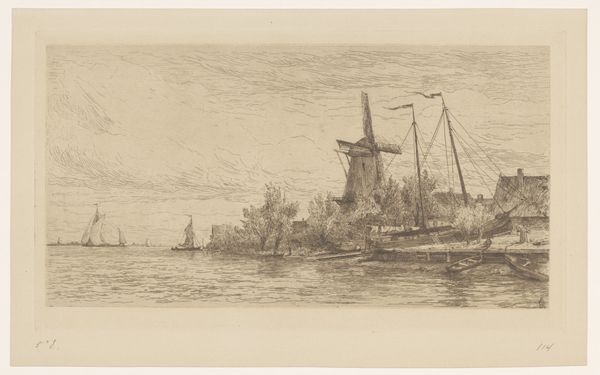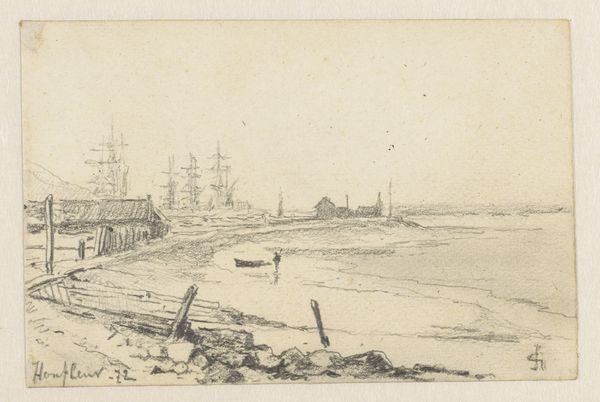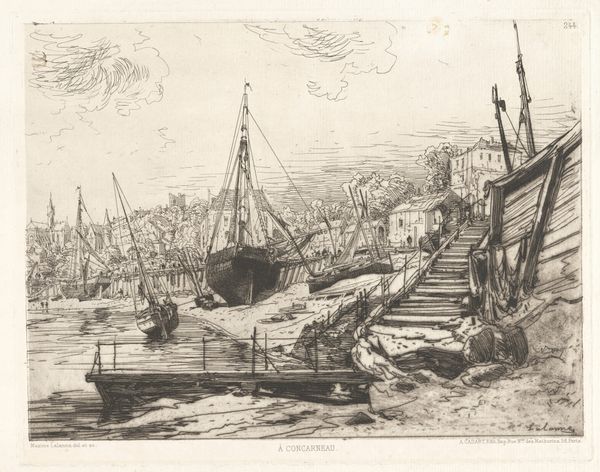
Dimensions: Sheet: 10 5/16 × 15 1/4 in. (26.2 × 38.8 cm) Plate: 9 7/16 × 14 15/16 in. (24 × 38 cm)
Copyright: Public Domain
Curator: Here we have "Yacht Tavern, Erith", an etching and drypoint in ink by Sir Francis Seymour Haden, created in 1865. It is currently housed at the Metropolitan Museum of Art. Editor: The composition immediately strikes me—it’s quite stark. The heavy foreground figures and railings really push the detailed midground back, creating an almost dreamlike atmosphere. Curator: Indeed. The work showcases Haden's mastery of the drypoint technique. Notice the rich, velvety blacks achieved through the burr left by the drypoint needle, particularly evident in the foreground figures and the details of the ships. How do you think this relates to romanticism? Editor: It speaks to romanticism through its portrayal of industry, the ordinary, the people by the river; Haden uses etching and drypoint, with a touch of picturesque Romanticism in that balance of nature and burgeoning modernity and creates a detailed portrayal of everyday life on the River Thames, likely touching on contemporary socio-economic changes and industrial impact on communities, so his focus goes past formal representation. Curator: That interplay between detailed specificity and an atmospheric whole really lends it that romantic spirit, doesn’t it? I mean, if you really focus on the interplay of dark and light areas. Look at how the light defines the edges of the tavern buildings, and then compare that to the more open expanses of sky and river! Editor: Precisely. I mean what we read here isn't just compositional play, but perhaps it's also his message to highlight tensions between expansion, industrial advancements, nature and communities. Did the expansion help all who occupied Erith in 1865? Curator: Interesting angle to this detailed cityscape and river portrayal of industry during that time! I think you may be right to hint at themes of commerce and community. Editor: Looking at the social undercurrents can reveal much about its engagement with societal structures, adding layers of contemporary reading, for an 1865 audience but even for contemporary times! Curator: I appreciate your attention to social themes and your unique interpretive frame. My appreciation stems from the mastery of composition. Editor: Art gives opportunity for discussions to learn more.
Comments
No comments
Be the first to comment and join the conversation on the ultimate creative platform.
